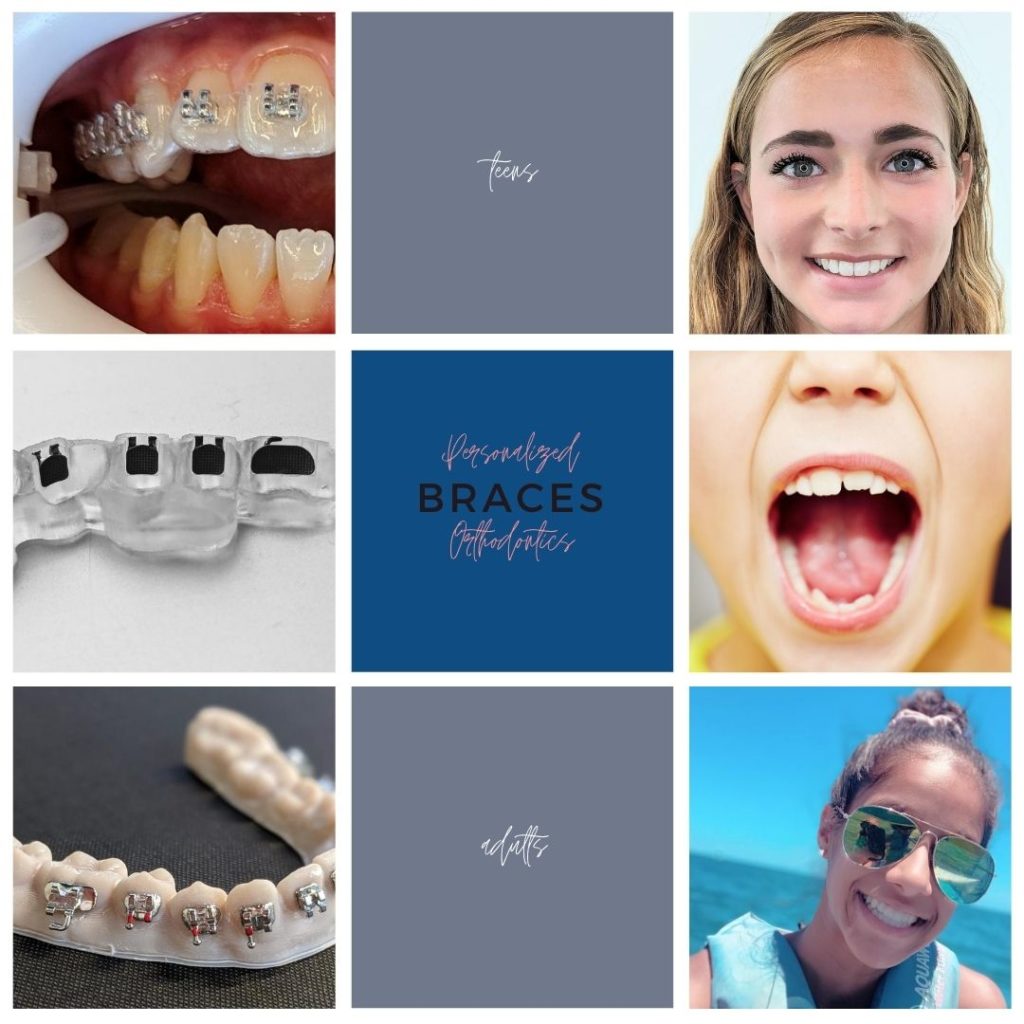Unknown Facts About Legacy Orthodontics
Table of ContentsEverything about Legacy OrthodonticsThe Ultimate Guide To Legacy OrthodonticsLittle Known Questions About Legacy Orthodontics.Some Known Details About Legacy Orthodontics Excitement About Legacy Orthodontics
In addition, we use flexible therapy timetables, versatile repayment alternatives and an enjoyable, delightful experience.An orthodontist is a dental practitioner educated to diagnose, prevent, and deal with teeth and jaw abnormalities. Orthodontists function with people of all ages, from children to adults.
Malocclusion, or misaligned teeth, can result in dental concerns, including dental cavity, gum illness, and hard or unpleasant chewing. Yet not everyone is born with straight teeth. If you have a negative bite or big spaces in between your teeth, you may intend to speak with a dental practitioner specializing in orthodontic treatment.
6 Easy Facts About Legacy Orthodontics Explained
( Image Credit Rating: DigitalVision/Getty Images) Orthodontists use repaired and detachable oral gadgets, like dental braces, retainers, and bands, to alter the setting of teeth in your mouth. Orthodontic treatment is for dental problems, consisting of: Jagged teethBite issues, like an overbite or an underbiteCrowded teeth or teeth that are too much apartJaw misalignmentThe objective of orthodontic treatment is to enhance your bite.
A healthy and balanced bite guarantees you can eat, eat, and talk correctly. While you might believe of orthodontists as primarily for youngsters or teenagers that need braces, they can deal with oral issues at any type of age. Orthodontists attend college, oral school, and orthodontic institution. After college graduation, they spend 2 or 3 years in an orthodontic residency program.
All orthodontists are dentists, but not all dental experts are orthodontists. Orthodontic residency programs use extensive, focused instruction for oral specialists. They concentrate on 2 locations: Exactly how to appropriately and safely relocate teeth Just how to correctly lead growth in the teeth, jaw, and faceOnce an orthodontist has completed training, they have the choice to come to be board accredited.
Not known Factual Statements About Legacy Orthodontics
Imbalance, or malocclusion, is the most common reason individuals see an orthodontist. It is genetic and is the outcome of dimension differences between the top and lower jaw or between the jaw and teeth. Malocclusion brings about tooth overcrowding, a misshapen jaw, or irregular bite patterns. Malocclusion is typically treated with: Your orthodontist attaches metal, ceramic, or plastic square bonds to your teeth.
Some individuals need a headgear to help relocate teeth into line with stress from outside the mouth. A retainer is a customized gadget that keeps your teeth in place.
They can create added area in the mouth without having to pull teeth. Orthodontists use cables, medical screws, or plates to sustain your jaw bone.
You might need to see an orthodontist if you have: Crowding or otherwise enough space for all of your teethOverbite, when your upper teeth come by your bottom teethUnderbite, when your bottom teeth are as well far forwardSpacing or concerns with gapsCrossbite, which is when your top teeth fit behind your bottom teeth when your mouth is closedOpen bite or an upright space in between your front base and top teethMisplaced midline, when the facility of your bottom and upper teeth do not align Fixing a dental malocclusion can: Make biting, chewing, and speaking easierImprove the symmetry of our face and your total appearanceEase discomfort from temporomandibular joint problemsSeparate your teeth and make them simpler to cleanse, aiding stop dental caries or dental caries It's commonly a dental practitioner who initially notices misaligned teeth throughout a regular exam.
Getting The Legacy Orthodontics To Work

During your first orthodontic consultation, you'll likely have: A dental examPhotos taken of your face and smileDental X-raysPanoramic (360 level) X-rays of your face and headImpressions to develop molds of your teethThese tests will help your orthodontist recognize just how to continue with your treatment. leesburg clear braces. An orthodontist is a dental expert who's had training to treat your teeth and jaw
Orthodontists may perform surgical treatment, exams,X-rays,and even more to help you attain an extra comfy, much healthier smile. An orthodontist is concentrated on your bite, so something like a chipped tooth would be handled by a dentist. Orthodontists are dental experts but not all dental professionals are orthodontists. Orthodontists are concentrated on your bite, or the means your teeth meshed, and the straightness of your teeth.
Ever before asked yourself how celebrities constantly appear to have flawlessly lined up teeth? Orthodontists are oral professionals who concentrate on remedying irregularities in the teeth and jaws.
The smart Trick of Legacy Orthodontics That Nobody is Discussing

While braces are one of the most frequently recognized orthodontic treatment, orthodontists have a diverse toolkit at their disposal. The details technique chosen depends upon the severity of the instance, the patient's age, and individual choices. These reliable braces make use of a system of braces adhered to the teeth and linked by wires.
These detachable trays are tailor-made to considerably move the teeth's setting. In situations of narrow jaws, palatal expanders can be utilized to develop area for appropriate tooth positioning.